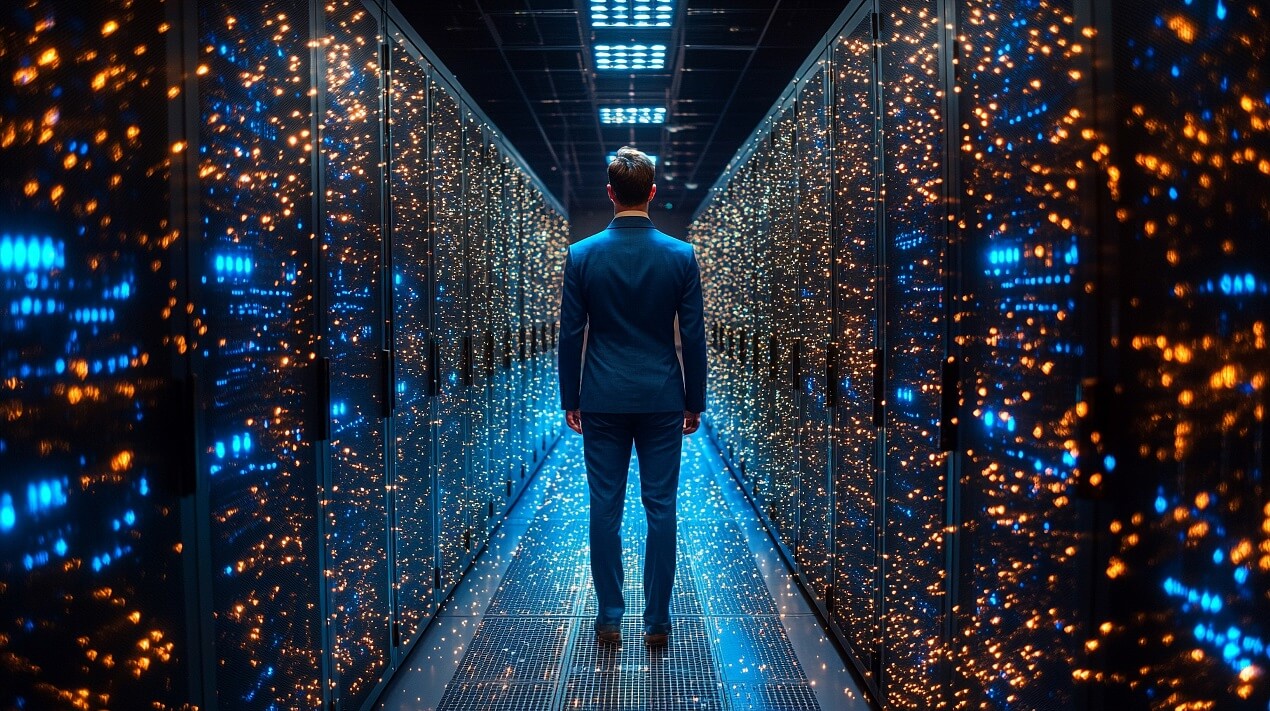Artificial intelligence (AI) is advancing at cruising speed. Ever more powerful models like GPT-4o, Claude 3, and Grok from xAI are being trained with colossal amounts of data and require unprecedented computing infrastructures. But behind this algorithmic revolution lies another, much quieter but equally transformative: the global explosion of data centers specifically designed for AI.
These centers, which some already refer to as the "factories of the 21st century," not only represent a technological leap but also a new challenge for the planet: in terms of energy, water resources, land distribution, and job creation. Are we prepared to address their implications?
A Shift in Scale and Purpose
Until recently, traditional data centers were focused on housing servers for web services, emails, or cloud storage. However, the rise of generative AI has changed everything. We’re now talking about facilities that house tens of thousands of GPUs and accelerators, consume hundreds of megawatts of electricity, and require advanced cooling systems—many based on water or immersion cooling—to dissipate the heat generated by the training and deployment of large-scale language models.
The best example is the cluster of xAI in Memphis, Tennessee, which already exceeds 250 MW of capacity and plans to expand even further. Or the Amazon Web Services campus in Hermiston, Oregon, which has grown alongside the needs of Anthropic. Companies like Microsoft, Google, and Meta are also initiating similar deployments in regions across North America, Northern Europe, the Middle East, and Asia-Pacific.
Where Are They Being Built and Why?
The location of these data centers follows a complex logic. They seek not only cheap land or proximity to renewable energy sources but also:
- Availability of stable and cheap energy, often linked to hydroelectric zones or areas abundant in solar/wind energy.
- Access to water, a crucial resource for cooling, especially in temperate climates.
- Connectivity, with the presence of large fiber optic networks and interconnection points.
- Fiscal or regulatory incentives offered by local governments to attract tech investment.
This has turned regions like Ireland, the Netherlands, Northern Sweden, Virginia, Dubai, or Castilla-La Mancha and Aragon (Spain) into emerging hubs for AI data centers. However, this concentration is also causing tensions in local ecosystems, from competition for water to rising energy prices.
What Real Impact Do They Generate?
Industry supporters insist on the obvious benefits: creation of skilled jobs, economic stimulation, attraction of investments, digitalization of the environment, and generation of associated public services.
Indeed, many of these centers involve hundreds of millions of euros in direct investment, creation of jobs in maintenance, engineering, and security, as well as tax revenues for rural or peripheral municipalities.
However, serious questions arise:
- Is it sustainable to build dozens of data centers that consume the electricity of a medium-sized city?
- What impact does it have on water resources in dry or desertifying regions?
- What real carbon footprint do they generate, considering not only consumption but also construction, transport, and maintenance?
Although many companies claim to operate on 100% renewable energy, the reality is more nuanced. They often buy green energy credits to offset emissions, but the actual supply still relies on fossil fuels during peak hours or in insufficiently renewable networks.
The Risk of a Climate Digital Divide
Another concerning consequence is the geopolitical concentration of computational power. Major tech firms—Microsoft, Amazon, Google, Meta, NVIDIA, xAI—are centralizing not only training capacity but also the physical nodes of global AI.
This could lead to a climate digital divide, where some countries host data centers at the expense of local resources, while others access AI as mere end consumers, without participating in infrastructure or decision-making.
What Now?
We stand at a turning point. While it is undeniable that AI data centers are engines of innovation, it is equally true that they cannot grow indefinitely without a clear sustainability and governance strategy.
It is urgent to develop European and global regulatory frameworks to ensure:
- Transparency in resource use.
- Mandatory energy and environmental audits.
- Real incentives for centers employing sustainable cooling and locally renewable energy.
- More equitable land distribution.
- Citizen participation and consultation with affected local communities.
Moreover, we must move toward AI that is not only more powerful but also more efficient. Research into smaller models, training with less data, and more optimized hardware will be key to reducing pressure on physical infrastructure.
Conclusion
Artificial intelligence will change the world, but how we host it will change it too. Data centers are becoming the new pillars of the 21st century: powerful, invisible, and profoundly influential.
The question is no longer whether we need them, but how we build them, where we locate them, and at what cost to the planet and its people. The answer, if we want a truly intelligent future, must be: with responsibility, vision, and balance.

